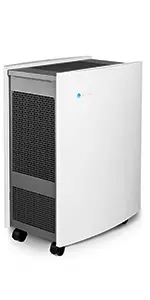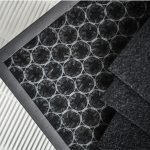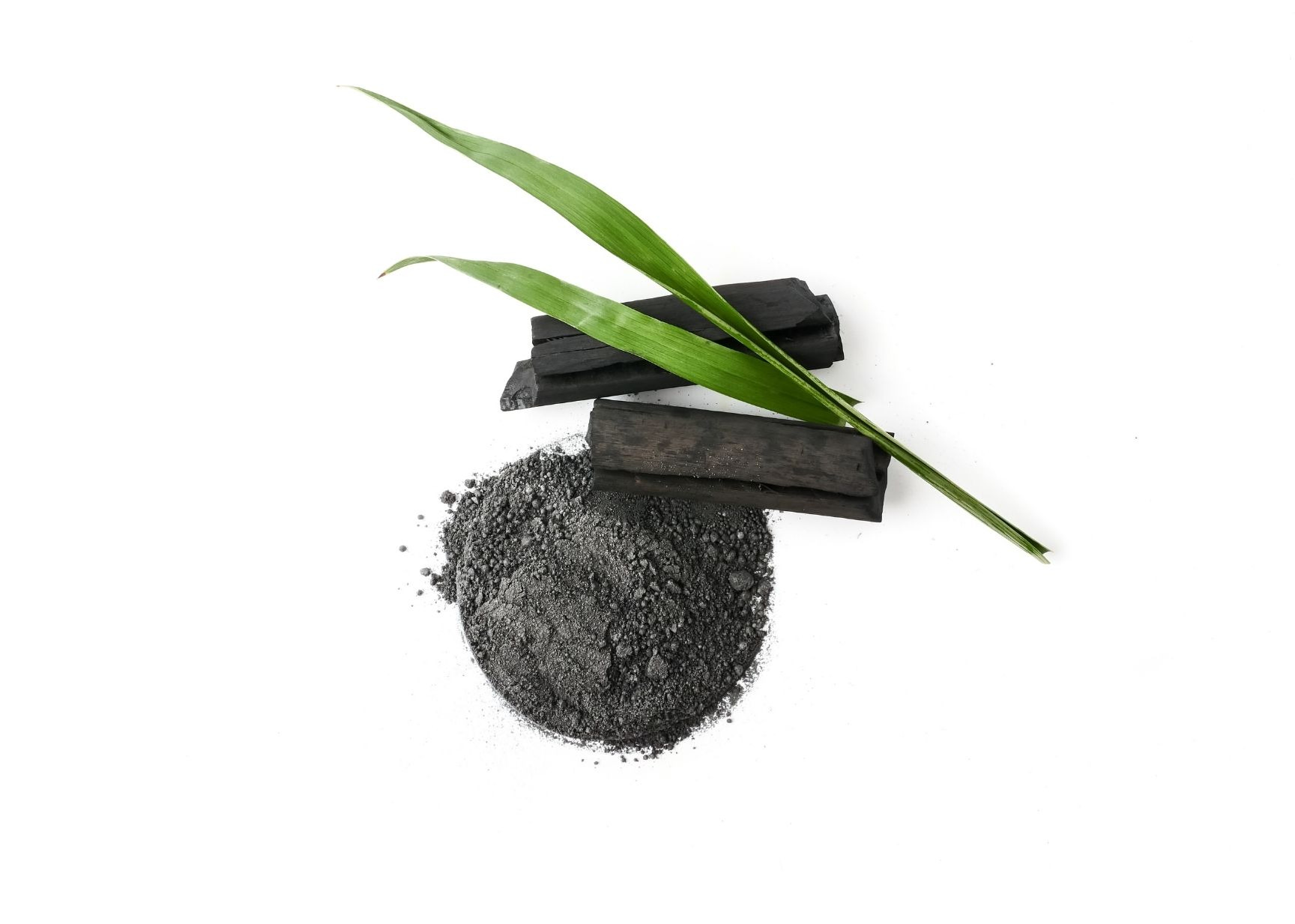Table of Contents
What Kind of Air Purifier is Best for VOCs and Formaldehyde?
 For those concerned about indoor air quality, especially the levels of volatile organic compounds (VOCs) and formaldehyde, the best air purifiers are those equipped with significant activated carbon filtration, combined with advanced filtration technologies such as HEPA filters, HEPASilent technology, and HyperHEPA filtration. These purifiers are highly effective in removing harmful chemicals from the air, thus significantly enhancing the healthiness of your home environment.
For those concerned about indoor air quality, especially the levels of volatile organic compounds (VOCs) and formaldehyde, the best air purifiers are those equipped with significant activated carbon filtration, combined with advanced filtration technologies such as HEPA filters, HEPASilent technology, and HyperHEPA filtration. These purifiers are highly effective in removing harmful chemicals from the air, thus significantly enhancing the healthiness of your home environment.
The Best Air Purifiers for Removing VOCs and Formaldehyde
Based on extensive research and testing, the following air purifiers stand out as the best options for removing VOCs and formaldehyde from your home’s air:
Best Overall for VOCs & Formaldehyde Removal:
IQAir HealthPro Plus:
 This air purifier stands out due to its HyperHEPA filtration technology, specifically designed to capture ultrafine particles, and its V5-Cell Gas & Odor Filter containing activated carbon and potassium permanganate for exceptional gas and odor removal, making it highly effective against VOCs and formaldehyde.
This air purifier stands out due to its HyperHEPA filtration technology, specifically designed to capture ultrafine particles, and its V5-Cell Gas & Odor Filter containing activated carbon and potassium permanganate for exceptional gas and odor removal, making it highly effective against VOCs and formaldehyde.
Additionally, its coverage area of up to 1125 square feet makes it suitable for large rooms. While being the most expensive option, its superior filtration performance and broad coverage justify its position as the “Best Overall.”
- Air Cleaning Coverage: Up to 1125 Square Feet
- Filter Type: HyperHEPA + V5-Cell Gas & Odor Filter (activated carbon + potassium permanganate)
- Key Pollutants Removed: Ultrafine particles, dust, allergens, mold, viruses, VOCs, formaldehyde, odors, pet dander, smoke
- Unique Features: Superior filtration for ultrafine particles, exceptional gas and odor removal, Swiss-made quality
- Best suited for: Large rooms, severe allergies, asthma, chemical sensitivities
- Price Range: Approximately $1,300 – $1,500 USD
See IQAIR HealthPro Here
Runner-Up for VOCs & Formaldehyde Removal:
Austin Air HealthMate HM400:
 This air purifier boasts a large activated carbon filter, renowned for effective chemical absorption of VOCs and formaldehyde. Its medical-grade HEPA filter tackles dust, allergens, and other airborne pollutants efficiently. While not employing the advanced technology of the IQAir, its solid overall performance, durability, and coverage of up to 400 square feet make it a strong contender at a more affordable price point.
This air purifier boasts a large activated carbon filter, renowned for effective chemical absorption of VOCs and formaldehyde. Its medical-grade HEPA filter tackles dust, allergens, and other airborne pollutants efficiently. While not employing the advanced technology of the IQAir, its solid overall performance, durability, and coverage of up to 400 square feet make it a strong contender at a more affordable price point.
- Air Cleaning Coverage: Up to 400 Square Feet
- Filter Type: Medical-Grade HEPA + Activated Carbon
- Key Pollutants Removed: Dust, allergens, mold, viruses, VOCs, formaldehyde, pet dander, smoke
- Unique Features: Large activated carbon filter for effective chemical absorption, durable steel construction
- Best suited for: Large rooms, individuals with chemical sensitivities, allergy and asthma sufferers
See Austin HealthMate Here
Best Value for VOCs & Formaldehyde Removal:
- Blueair Classic 605:
 This air purifier offers a balance of affordability and effectiveness. Its HEPASilent technology combines electrostatic and mechanical filtration, effectively removing dust, allergens, and common pollutants.
This air purifier offers a balance of affordability and effectiveness. Its HEPASilent technology combines electrostatic and mechanical filtration, effectively removing dust, allergens, and common pollutants.
The optional SmokeStop filter, containing activated carbon, enhances its ability to tackle VOCs, formaldehyde, and smoke.With coverage of up to 605 square feet and a quieter operation, it presents an attractive value proposition for those seeking a budget-friendly option with decent VOC and formaldehyde removal capabilities.See Here - Air Cleaning Coverage: Up to 605 Square Feet
- Filter Type: HEPASilent (combination of electrostatic and mechanical filtration) + Optional SmokeStop Filter (activated carbon)
- Key Pollutants Removed: Dust, allergens, mold, viruses, pet dander, smoke (with SmokeStop filter), light VOCs and odors
- Unique Features: Quiet operation, whisper-silent night mode, optional SmokeStop filter for enhanced gas and odor removal
- Best suited for: Medium to large rooms, bedrooms, allergy and asthma sufferers
See Price Here
What are VOCs?
VOCs are emitted as gases from certain solids or liquids. VOCs include a variety of chemicals, some of which may have short- and long-term adverse health effects. Concentrations of many VOCs are consistently higher indoors (up to ten times higher) than outdoors. VOCs are emitted by a wide array of products numbering in the thousands. Examples include:
- Paints and lacquers
- Paint strippers
- Cleaning supplies
- Pesticides
- Building materials and furnishings
- Office equipment such as copiers and printers
- Correction fluids and carbonless copy paper
- Graphics and craft materials including glues and adhesives, permanent markers, and photographic solutions
- Hobbies
- Dry-cleaned clothing
- Air fresheners
- Personal care products
- Disinfectants
Organic chemicals are widely used as ingredients in household products. Paints, varnishes, and wax all contain organic solvents, as do many cleaning, disinfecting, cosmetic, degreasing, and hobby products. Fuels are made up of organic chemicals. All of these products can release organic compounds while you are using them, and, to some degree, when they are stored.
 Health Effects of VOCs
Health Effects of VOCs
Exposure to VOCs can cause both short-term and long-term health effects. General symptoms include:
- Eye, nose, and throat irritation
- Headaches
- Loss of coordination
- Nausea
- Damage to liver, kidney, and central nervous system
Formaldehyde is classified as a human carcinogen and benzene exposure is associated with leukemia. Other health effects include:
- Eye, nose, and throat irritation
- Wheezing and allergic reactions
- Fatigue
- Skin rashes
Some organics can cause cancer in animals; some are suspected or known to cause cancer in humans. The ability of organic chemicals to cause health effects varies greatly from those that are highly toxic, to those with no known health effects. As with other pollutants, the extent and nature of the health effect will depend on many factors including level of exposure and length of time exposed.
What is Formaldehyde?
Formaldehyde is a colorless, strong-smelling gas commonly used in pressed-wood products, composite wood products, and furniture made with pressed wood products. It is also commonly used as an industrial fungicide, germicide, and disinfectant, and as a preservative in mortuaries and medical laboratories.
Formaldehyde is naturally occurring and can also be produced in small amounts by most living organisms as part of normal metabolic processes. However, elevated levels can cause adverse health effects.
 Major Sources of Formaldehyde in Homes
Major Sources of Formaldehyde in Homes
- Pressed-wood products: plywood, paneling, particleboard, fiberboard
- Furniture and furnishings made with pressed wood products
- Carpet
- Glues and adhesives
- Permanent press fabrics
- Paper products
- Paint and varnish
- Burning of oil, gas, kerosene, coal, or wood
- Cigarette smoke
- Adhesives
- Foam insulation
- Wallcoverings
Health Effects of Formaldehyde
Exposure to formaldehyde can cause both short-term and long-term health effects. General symptoms include:
- Eye, nose, throat, and skin irritation
- Wheezing and coughing
- Asthma attacks
- Fatigue
- Skin rashes
- Severe allergic reactions
Long-term exposure to high levels of formaldehyde is associated with an increased risk of cancer. The National Cancer Institute (NCI) determined that exposure to formaldehyde may cause leukemia, particularly myeloid leukemia, in humans.
What to Look for in an Air Purifier for VOCs and Formaldehyde
Here are the key features to look for when shopping for an air purifier optimized for removing VOCs and formaldehyde:
- Activated Carbon Filter – The most critical component. Activated carbon adsorbs gaseous pollutants.
- Large Carbon Filter Surface Area – The more carbon the better for catching VOCs and gases.
- Sealed Edges – Prevents pollutants from bypassing the carbon filter.
- Supplementary Filtration Technologies – PCO, PECO or other methods to destroy VOCs are beneficial.
- Real-Time Pollution Sensor – Alerts you to spikes in VOCs and automatically adjusts fan speed.
- App Connectivity – Allows monitoring air quality when away from home.
- CADR Rating – A higher clean air delivery rate means faster air purification.
- Noise Level – Units with large fans can generate significant white noise.
- Coverage Area – Match the unit’s specs to the size of your rooms.
Also consider whether you want a portable unit or a whole-house system with multiple air purifiers working together.
Where to Place the Air Purifier
Strategic placement of your air purifier will improve its effectiveness. Some tips on where to put it:
- Near known sources of VOCs and formaldehyde like pressed wood furniture or recently painted walls.
- In rooms where you spend the most time such as bedrooms and family rooms.
- Away from objects that may obstruct air flow.
- Elevate the unit if possible to optimize air circulation.
- Avoid corners and alcoves which can restrict air flow.
You may need more than one air purifier if your home is large, has an open floor plan, or VOC sources are located far apart. Let the unit run continuously instead of only when you are home.
FAQs
1. Do air purifiers remove all VOCs and formaldehyde?
The best air purifiers are highly effective at removing most VOCs and formaldehyde, but may be less effective on some types. No air purifier eliminates 100% of these pollutants. However, they significantly reduce concentrations to safer levels.
2. How long does it take an air purifier to remove VOCs and formaldehyde?
Air purifiers with large amounts of activated carbon and powerful fans can purge VOCs and formaldehyde within hours of operation. But it depends on VOC levels and other factors like room size. Run times of days or longer may be needed to thoroughly purify the air in some cases.
3. Is it worth buying an air purifier just for VOCs and formaldehyde?
If you are highly sensitive to VOCs/formaldehyde or know exposure levels are high, a specialized air purifier is worth the investment for your health. If exposure is moderate, a general HEPA air purifier with added carbon may suffice.
4. Can air purifiers help with “new home smell” from VOCs?
Yes, “new home smell” is caused by high levels of VOCs from new furniture, carpeting, paints, and building materials. An air purifier with substantial VOC removal abilities can help eliminate this smell faster.
5. Should I leave an air purifier running all the time?
It is generally recommended to run air purifiers continuously if trying to control VOCs, formaldehyde or other gaseous pollutants. This maintains lower concentrations consistently rather than allowing buildup when the unit is off.
6. How do I know if VOC or formaldehyde levels are too high in my home?
The most definitive way is to do professional air quality testing. But signs like persistent odors, eye/nose/throat irritation, breathing issues, and headaches may indicate a problem. Many air purifiers also have VOC sensors that display real-time readings.
7. Can air purifiers reduce the risk of cancer from formaldehyde?
The ability of air purifiers to reduce cancer risk is unclear. But by maintaining formaldehyde concentrations at or below recommended health guidelines, air purifiers likely help lower cancer risk.
 The Bottom Line
The Bottom Line
VOCs and formaldehyde are two major indoor air pollutants that can accumulate to dangerous levels inside homes. Investing in an advanced air purifier with large amounts of activated carbon filtration and supplementary technologies will provide the best protection by removing these chemicals from the air you breathe.
Carefully research air purifier models, read reviews, and compare their VOC/formaldehyde removal capabilities before making a purchase. Strategically place the unit and run it continuously for optimal results. Improving indoor air quality promotes better health and can reduce irritation and symptoms caused by exposure to VOCs and formaldehyde inside the home.
For more information, visit: EPA.gov


 This air purifier offers a balance of affordability and effectiveness. Its HEPASilent technology combines electrostatic and mechanical filtration, effectively removing dust, allergens, and common pollutants.
This air purifier offers a balance of affordability and effectiveness. Its HEPASilent technology combines electrostatic and mechanical filtration, effectively removing dust, allergens, and common pollutants. Health Effects of VOCs
Health Effects of VOCs Major Sources of Formaldehyde in Homes
Major Sources of Formaldehyde in Homes The Bottom Line
The Bottom Line





